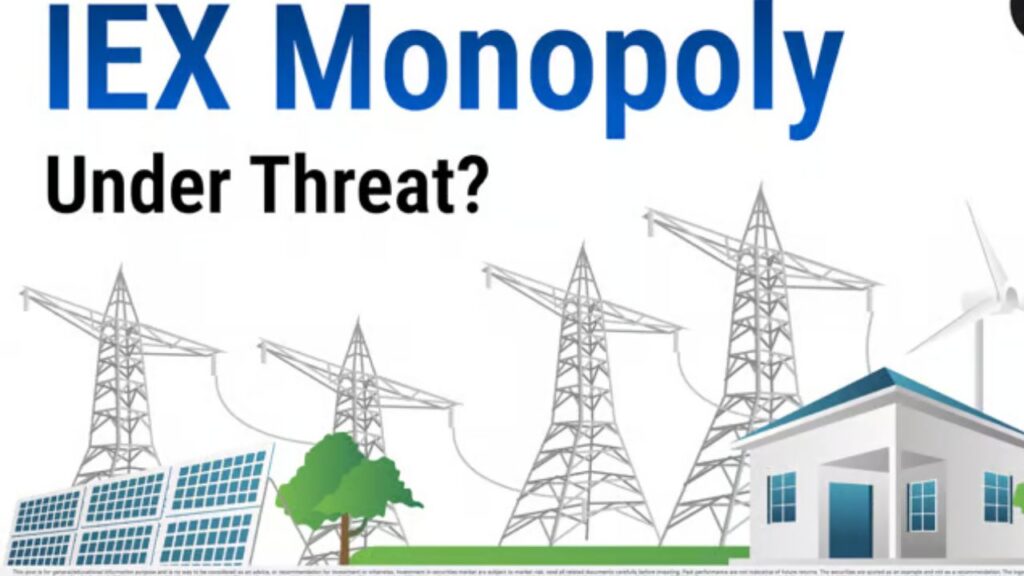The Complete Story of IEX and Market Coupling
A deep dive into India’s power market reforms and why IEX shares crashed 30% in a day.
🧠 What Is Market Coupling? (Explained)
In India’s electricity trading, multiple exchanges exist — primarily IEX (Indian Energy Exchange) and PXIL (Power Exchange India Limited).
Until now, these exchanges conducted separate price discovery processes. That means buyers and sellers placed bids on IEX or PXIL, and each platform determined its own price and volume independently.
Market coupling is a reform where:
All bids and offers from all exchanges are collected into a central pool, and one single uniform clearing price is determined for each time block.
So even if buyers bid on IEX and sellers bid on PXIL, the final matching happens centrally, and everyone gets the same price, regardless of which exchange they used.
Why is this important?
- It removes price discrepancies between platforms
- It promotes efficiency by matching the best bids regardless of platform
- It removes the advantage of being a dominant exchange — like IEX currently is
🧭 Why Is India Introducing Market Coupling?
The government’s objective is to modernize India’s power market. For decades, power was traded mostly through long-term contracts and bilateral deals. Short-term markets (like spot and day-ahead) were dominated by IEX.
But this created inefficiencies and imbalance:
- Prices varied across exchanges
- Liquidity was skewed — IEX had >90% market share
- Smaller players couldn’t compete on pricing
- There were allegations of price manipulation
So the Central Electricity Regulatory Commission (CERC) proposed market coupling to:
1. Unify price discovery
A single clearing price across the country
2. Ensure fair competition
Among all power exchanges
3. Maximize social welfare
By matching bids and offers more efficiently
4. Lay groundwork for MBED
A future system where the cheapest power gets dispatched nationally
🕰️ How Did This Unfold? (Chronology)
🧱 Phase 1: Monopoly Market
- IEX launched in 2008 and quickly captured over 90% market share
- PXIL remained small, and other players couldn’t gain liquidity
- IEX earned revenue mainly from transaction fees
🧱 Phase 2: Policy Planning (2020–2023)
- CERC, Ministry of Power, and POSOCO started planning reforms
- MBED: Power dispatch based on market price
- Market Coupling identified as necessary first step
- Draft regulations released
🧱 Phase 3: Decision and Shock (July 2025)
- On July 23, 2025, CERC approved phased implementation
- Phase 1 for Day-Ahead Market from January 2026
- Later phases may include Real-Time and Term-Ahead markets
- IEX shares fell nearly 30% in one day
💥 Why Did IEX Shares Crash So Drastically?
1. 🧨 Loss of Pricing Power
Until now, IEX controlled price discovery. That meant:
- IEX decided the final price based on its order book
- Participants had to go through IEX to get the best price
- This gave IEX immense power and exclusivity
With market coupling:
- The Market Coupling Operator (not IEX) will match bids
- IEX becomes just a pipeline to route bids
- The core competitive moat of IEX is dismantled
2. 🧨 Loss of Market Share Advantage
IEX had 98–99% share because participants went to IEX for:
- Liquidity
- Better price discovery
- Historical dominance
With market coupling:
- Liquidity no longer matters
- Participants can use any exchange for same price
- PXIL and others can easily grab market share
3. 🧨 Fee Pressure and Revenue Decline
Current fee: ~4 paise/unit
Post-coupling:
- Exchanges must compete on fees and services
- IEX may have to reduce fees to retain users
- Expected margin fall to 2.5–3 paise/unit
- Could halve profitability over time
🔮 What Happens Next?
📉 What This Means for IEX’s Business
✅ Pros:
- Strong brand recognition
- Good tech infrastructure
- May retain some volume due to familiarity
❌ Cons:
- Pricing control lost
- No longer unique
- Intense competition on fees
- Needs heavy innovation investment
🧠 Final Analysis: What’s the Big Picture?
This is a structural shift, not a short-term event.
Market coupling is not just a regulatory tweak — it redefines the competitive landscape of power trading in India.
IEX investors are reacting because:
- The company’s core business model is being rewritten
- Growth, profitability, and market dominance — all are now uncertain
While the reform is great for the Indian power sector, it forces IEX to evolve or risk losing relevance.



